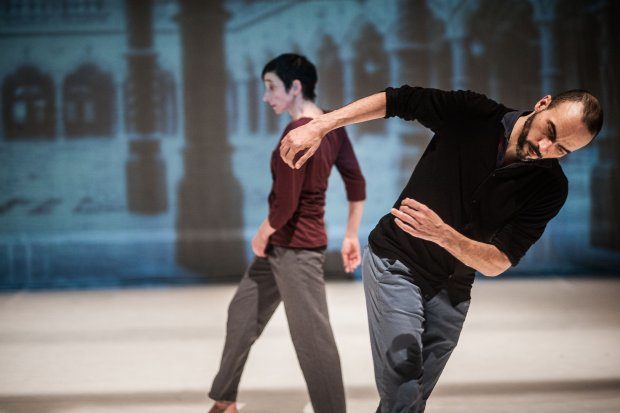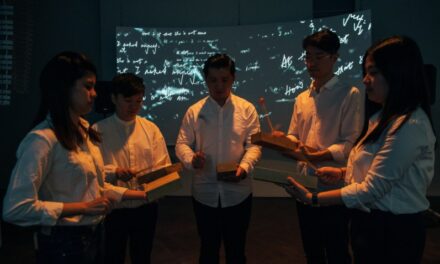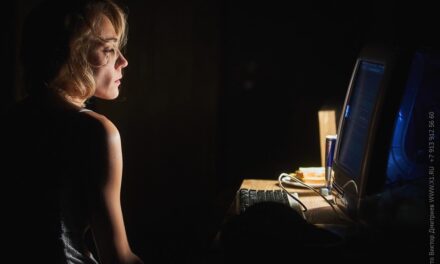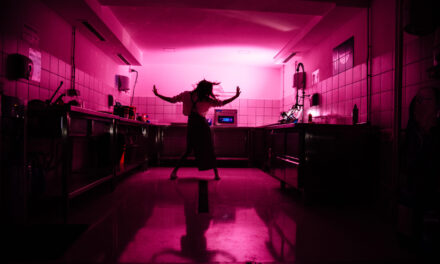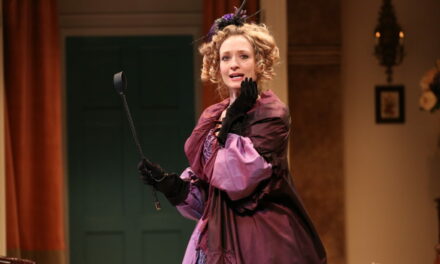In her research, theatre scholar Annelies Van Assche investigates the working and living conditions of contemporary dance artists in Brussels and Berlin and how these affect the working processes, modes of working, and eventually the artistic work itself. Her comprehensive research project ties dance studies to sociology by combining quantitative and qualitative research with the analysis of contemporary dance. Following the release of the first results included in a report, Annelies interviewed contemporary dance artist David Hernandez, whose Sketches on Scarlatti will premiere in Belgium in January at STUK.
(AVA) What is for you the value of investigating the contemporary dance profession in general, and the situation in these two ‘dance capitals’ in particular?
(DH) For one thing, I think it is important to demystify the work of artists a bit. In a time when we have increasingly right-wing governments who view culture as a luxury, it is important to shed some light on the working conditions of artists and to be clear that, for most of us, it is not all wine and caviar and bohemian lifestyle. I think that by humanizing the situation of artists, people can let go of the myth that artists are just lazy and feeding off of taxpayer money.
I also find it important to have more information in order to create better conditions. Finally, concerning these two cities, they are interesting reflections of each other. Berlin was more of a dance hub in the nineties and is still quite active as major cities go, but is no longer the paradise it once was, especially for freelance artists. Brussels, in my opinion, faces a similar decline if cultural politics and funding issues develop in the same direction as they have started to do recently, so definitely interesting to take these two cities as case studies.
In our data we observe a tendency among Brussels-based contemporary dance artists towards self-precarisation. This means that artists seem to be willing to sacrifice material income for the sake of immaterial income, motivated by the desire to be a creative subject. For instance, generally, the respondents have indicated to be satisfied with their profession and this satisfaction does not seem to depend on income or the access to benefits. Do you recognize this in your life and work path?
I think putting oneself in a precarious situation is simply an unfortunate side effect of deciding to make art your life. I don’t know anyone who feels satisfied with the insecurity and lack of stability they face as an artist. However, I do think that making a choice to do this kind of work keeps you in touch with essential human issues. You are perpetually in flux, constantly in the state of working to create the life you want. Which means you have to keep asking yourself “what kind of life do I want?” With this privilege comes a lot of scary things and precarity is one of those.
In that respect, one of our main findings reveals that in Belgium, the artist status, which principally provides financial support for artists in the periods between their contracts, effectively attempts to offer a socio-economic protection that is customized to the sector by taking into account the predominance of short employment relationships and un-contracted work in-between. The artist status may reduce precarity to semi-precarity through the flexicurity it provides, i.e. a combination of social protection and a flexible work environment. In the report, we offer some suggestions to improve this regime. You have had access to the artist status for many years now and I’m wondering how you have experienced the advantages and disadvantages of this flexicurity provision and what suggestions you have to improve it?
That is an interesting subject. I do have the artist status but almost never use it. This is because I am luckily mostly finding enough contracts. Even when I have a gap I don’t really use it as it was intended to. I have decided to save enough money to bridge the gap until the next contract, which is usually not far away. I do this because of several reasons. First, the one time I did use the artist status as intended, I ended up paying a huge amount more in taxes because I worked too much next to my unemployment and therefore got bumped into a new tax bracket. This probably happened because I don’t know well enough how the system in Belgium works, as I know many artists for whom it works just fine. Secondly, as many people have also abused the system, we now have to go through big efforts in order to not get kicked out of the system. I have heard of people having to create dossiers every nine months to prove they are looking for work and that have to attend many meetings during which they get the feeling of being interrogated. What is difficult is that you are actually never really not working, you are just not always being paid for what you do and there is never enough time to do it all. Therefore, all the hours I spend chasing extra paperwork take away time for creating or finding my next job. Still, I can understand that they need to be strict to avoid abuse, so I am not sure how this can be solved.
Lastly, once you are in the system, there are no shortcuts. I am not talking about illegal shortcuts but as an artist you have to color outside the lines sometimes. Not all that we do fits in the formulas that are understood by the administration. Once you are in the system, you have to prove everything you spend and how you spend all your time. You end up having to be creative about how to justify your unemployment benefits and this is both time-consuming, difficult, and demoralizing.
So basically, I am happy to have the artist status as a backup. This does give a sense of a safety net that creates at least some support for the precarious nature of what we do. As I am trying to learn to make a more livable planning for myself these days, I may come to rely more on the artist status in the future.
Like you said, our survey also shows that contemporary dance artists tend to work many unpaid hours. Almost half of the respondents are paid for maximum half of their actual working hours. This suggests that the division between work and private life is increasingly blurred. How many hours a day would you say you work?
Twenty-four! Of course, I’m still sleeping sometimes, but I work almost all day, every day. Actually, there is no average week. It really switches according to what we are working on at the moment. When there’s a concrete rehearsal period, project or teaching assignment, this dictates what’s happening around it. My instinct is to fill up empty periods, as I did recently because I’ve got to make money. This time, however, I said ‘no’ and decided I was just going to be at home because I’m really on the verge of a burn-out. Instead, I postponed some things to be at home and to work on my body, because I was actually having some physical problems. I was starting to feel like I was falling apart. However, in those periods the interweaving of work and life becomes even more complex because I’m always multitasking. If I’m cooking, for instance, I have my weights and my barbells in the kitchen, and I might be checking e-mails at the same time, or listening to music I want to use. I’m constantly combining too many things, which I’m also trying to do less, because I think that’s another reason why my brain is in overdrive.
What you’re describing here reminds me of the phenomenon that economist Guy Standings calls a ‘precariatised mind,’ which is a permanent stand-by feeling or a feeling of having far too much to do at all times combined with the sense that taking a time-out would entail the risk of missing opportunities. Also, Bojana Kunst mentioned that in the project-oriented regime “we work so much that we never again have time for ourselves and others; due to the amount of work and the intensity of our self-realization, we can actually burn out in life.”[i]
Yes, I also am trying to learn that I don’t need to pack every second of my calendar, but I’m very bad at this. The minute I see a gap, I panic. Maybe I have to find another way to do things, as I realize that this limbo-state, the state between two states, is the one that takes the most energy. And what’s happening often in culture is that you stay in survival mode for too long, which is a limbo-state as well; survival is neither dead nor alive, it’s trying to stay alive. This state demands such an amazing amount of energy that it’s almost inevitable that you’re going to burn out at some point because you just can’t keep it up for years. It is just not healthy on any level.
This resembles a concept introduced by Lauren Berlant, ‘slow death,’ which is the current phenomenon of populations that are just wearing out. It refers to people becoming more obese for instance, but also to people working all the time or doing so many things at the same time, they just don’t know what to do anymore, besides to keep going on anyway. In a way, it refers to what you called survival mode: trying to stay alive but slowly dying, or burning out, mentally as well as physically.
However, now we’re trying to change now this, as the survival mode made it impossible to enjoy what we are doing anymore. I have never made a piece that looks like what I think it should look like, even with the great dancers I’m working with. It maybe gets good after a while. For instance, Hullaballoo is a piece with seven people on stage with a lot of choreographic material. It actually requires a part-time company of people who are together regularly to work on this material, but we don’t have the infrastructure for this. We have everybody coming in from abroad, but we are unable to pay for rehearsal time. Therefore I have to make rehearsals as short as possible. So we retake the show far too fast, which is a big problem actually, because my work so detailed.
So the big question is: how to continue doing this when once we’ve had the creation process, there immediately is this survival mode again? And then all of these life questions that you never actually ask yourself start to pop up, because you’re just happy to make it to the end of the season and hope that you still have work the season after. In fact, to be a freelance artist is to be perpetually unemployed. You are always looking for the next job, and even when you have many jobs, you’re still unemployed. It’s exhausting, but there’s also something fantastic about it. I kind of enjoy it, or at least I used to enjoy more, that I’m able to plan my entire year. I decide what I do and when I do it and that’s rare in this world. So, it’s really a privilege in a certain way, like I mentioned before, but what comes with it is a nightmare.
Have you thought about how this state has affected your artistic work? For instance, could you think about Sketches on Scarlatti, your latest creation, and how it was it affected by this survival mode?
With Scarlatti as a reference point, you hit the nail on the head. A festival in Bonn was supposed to present Hullabaloo, my previous work, but then they couldn’t afford it. Because we don’t have structural subsidies, we have to charge exactly what it costs us to do the show, which is too expensive for many. However, they really wanted us in their program and asked us if we could make a small work-in-progress. As usual, I said ‘yes’ and ended up making an evening-length piece in two weeks. Nonetheless, it was received very well, so it became part of this season’s repertoire.
It gave us the ability to disembarrass ourselves from this difficult situation of subsidy cuts and lack of money and to make something that avoids all this, with relatively little stress on the organizational level. So this became a strategy: we had a new piece, but we didn’t have to apply for funding to create it. We received a very small coproduction budget, and we’re going to use that and hopefully it provides work and keeps our face in the market and buys us time.
However, what suffers from this is the process. We made the piece in two weeks and in December we have three more weeks during which we’re going to finish it. We’ll use the rest of the coproduction money to do this. I love working outside of the funding system, and I would do it all the time if I could. It gives you much more artistic freedom and ways to spend your money on art rather than on bookkeeping. Sketches on Scarlatti is strategic. We’re trying to sell it relatively cheap, so it is hard to say ‘no.’ Also, now we have a range of projects: there are four projects at the moment that we can sell in different price categories.
Why can Sketches on Scarlatti be so cheap? What are the aspects of the show that make it so easy to sell?
There’s no set and very little preparation is required. It’s a piece that can be set and performed on the same day, if needed. So that takes away extra hotel costs, and extra theater costs among other things. In comparison, for For Movement’s Sake we need at least a day to be in the theater to build the set. Because we don’t get to prepare and we don’t get to perform regularly enough, there is always a period during which we’re working for free to put the show back up. Additionally, the dancers in Sketches on Scarlatti don’t come from all over the world. All three of us are based in Brussels. I had to do that, and luckily, I’m happy with the people! But it’s a pity that I meet a lot of people who are great, and that I’d love to work with, but I don’t see any possibility to bring them to Brussels right now. This would cost a lot of money and a lot of extra administration work that is hard for a small organization like us to handle.
Is there anything positive you can imagine that comes out of the survival mode?
I have found a good way to keep my practice going. For example, I’ll be teaching for five weeks. At the same time, I have the Scarlatti-project that needs to be maintained. Both dancers I’m working with for Sketches on Scarlatti will be taking the class and that enables me to keep the artistic process going. They don’t get paid for that, unfortunately. However, I also had them teach Scarlatti-material to the students at the Kunsthumaniora in Brussels. So like this, we’re constantly finding ways to keep people employed but at the same time keep them working on the material, and keep them in the scene. There are ways to be very creative about keeping the process going, which actually, even if we had money all the time, I would still want to pursue. Now it is motivated by survival tactics, but it actually greatly benefits the work. You become clever at finding ways to keep everybody employed and at the same time keep the artistic process growing and the practice going. And that is a skill that I think is also getting lost these days.
This article was originally published on http://www.e-tcetera.be. Reposted with permission. Read the original article.
This post was written by the author in their personal capacity.The opinions expressed in this article are the author’s own and do not reflect the view of The Theatre Times, their staff or collaborators.
This post was written by Annelies Van Assche.
The views expressed here belong to the author and do not necessarily reflect our views and opinions.

